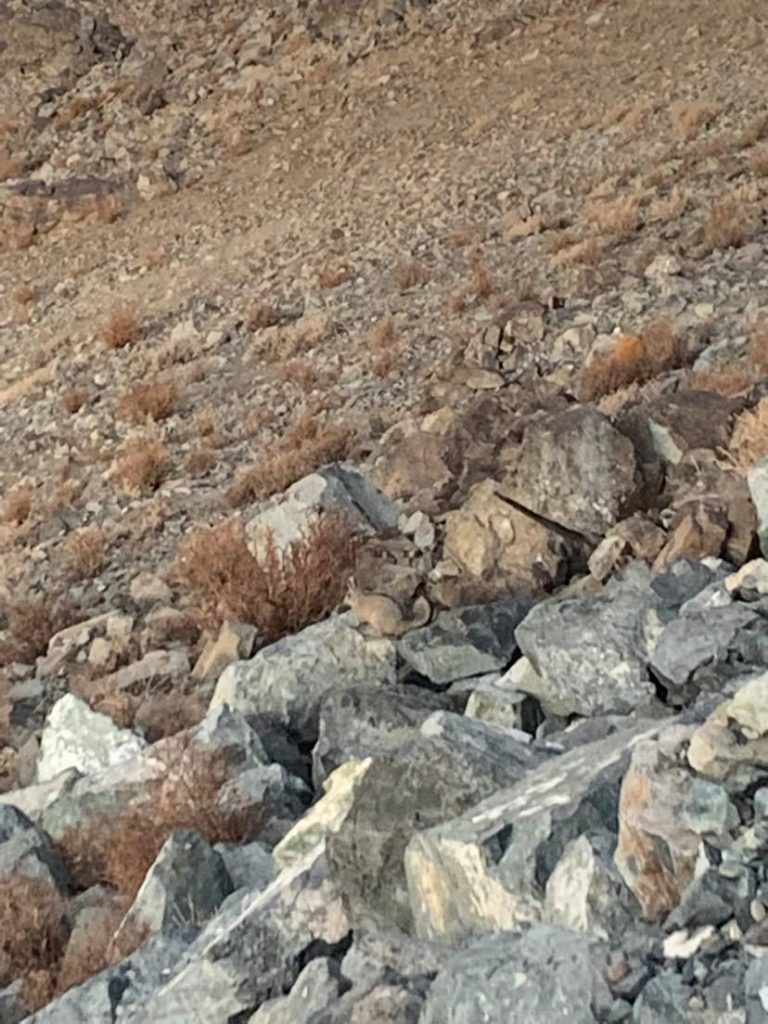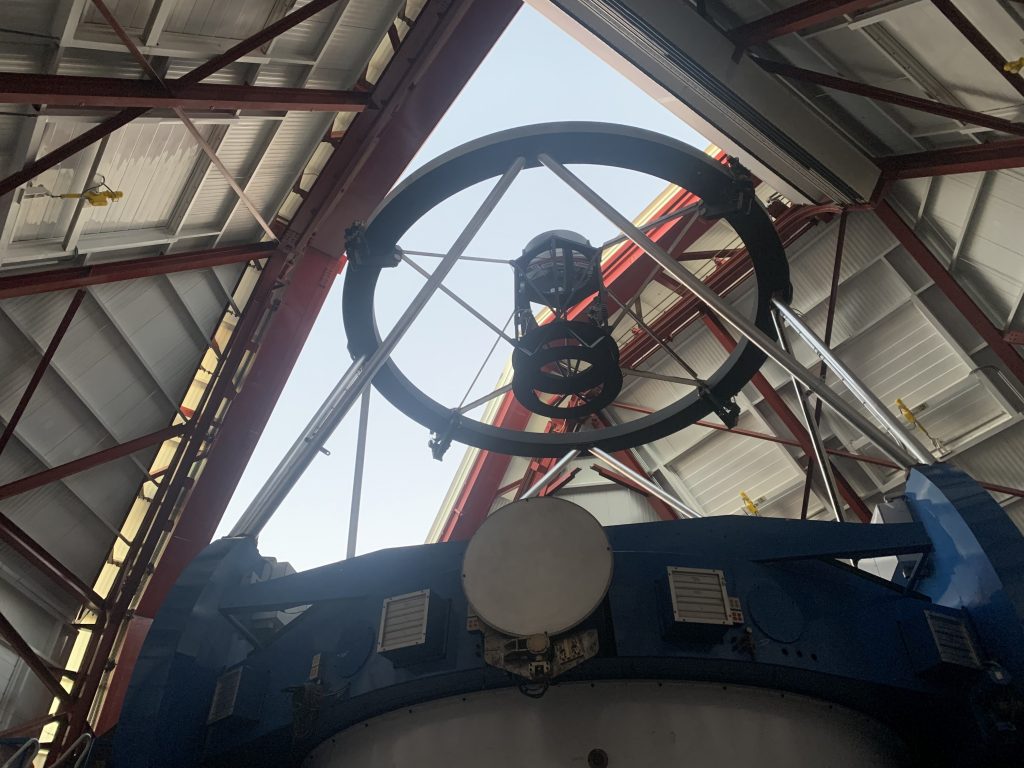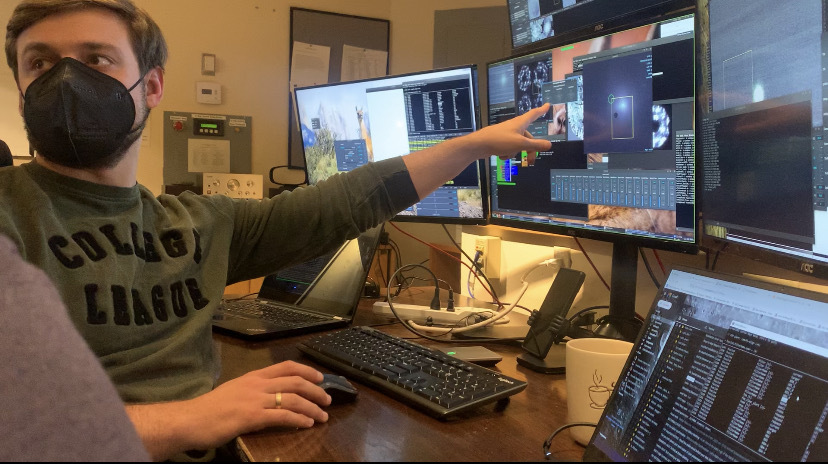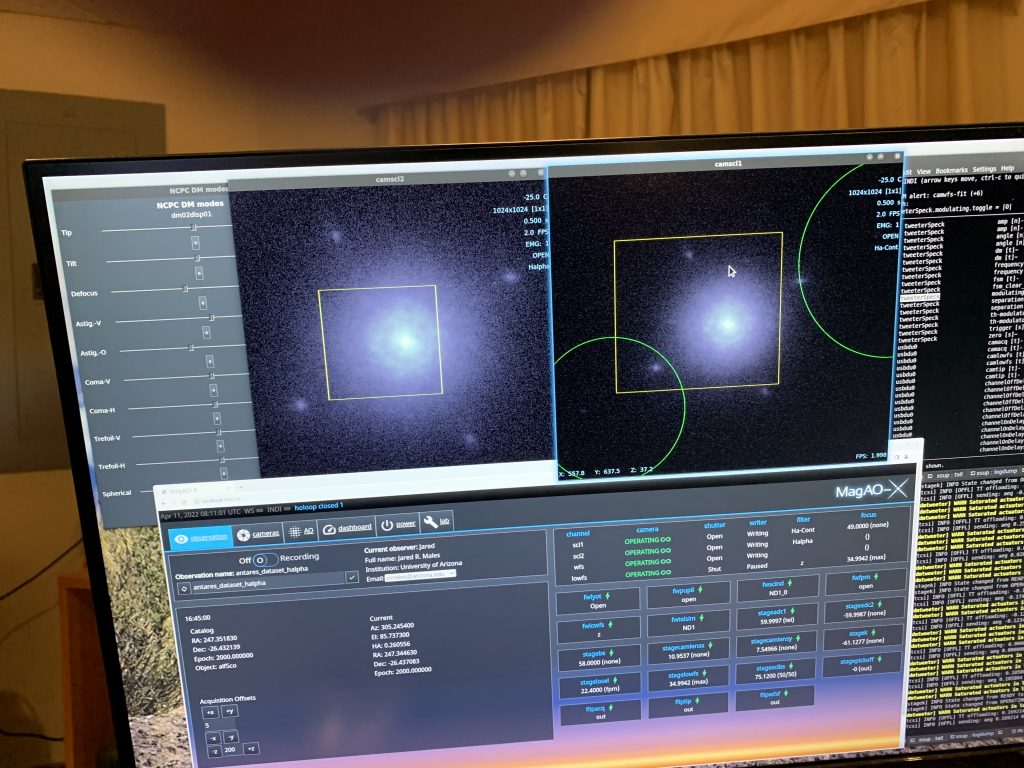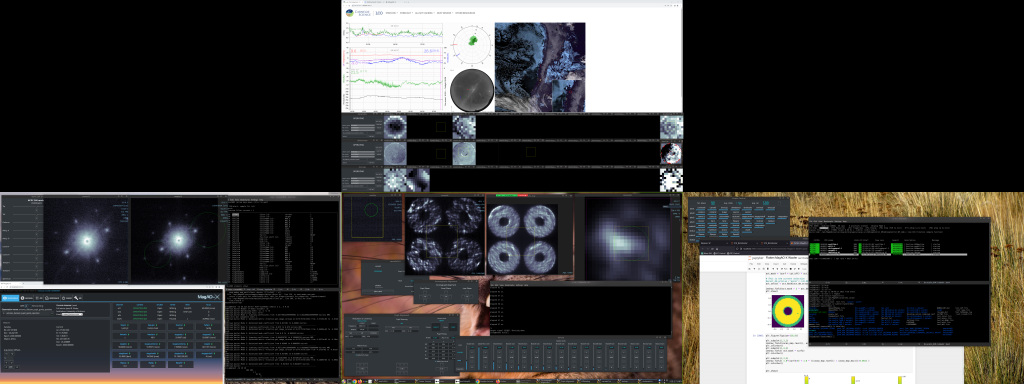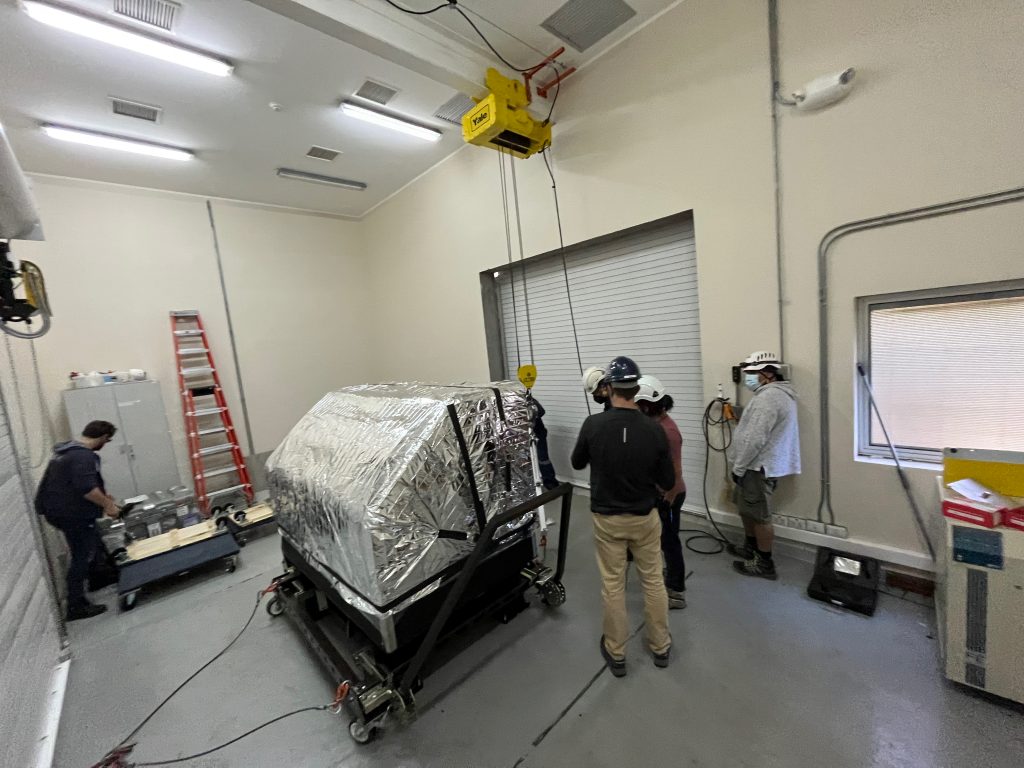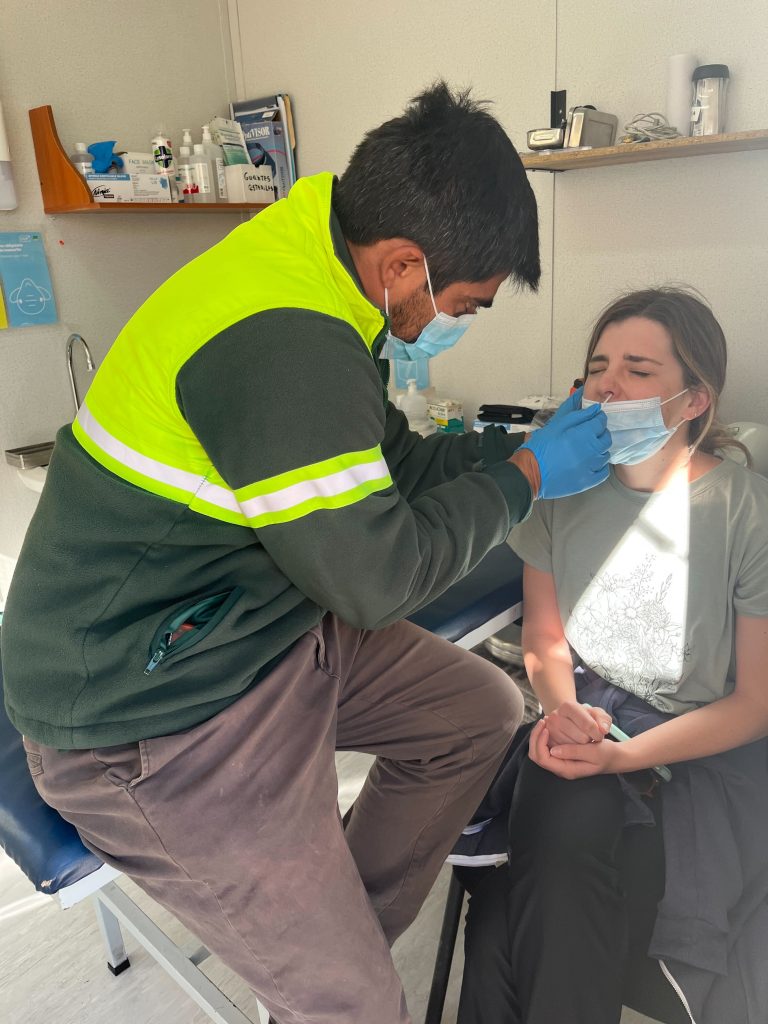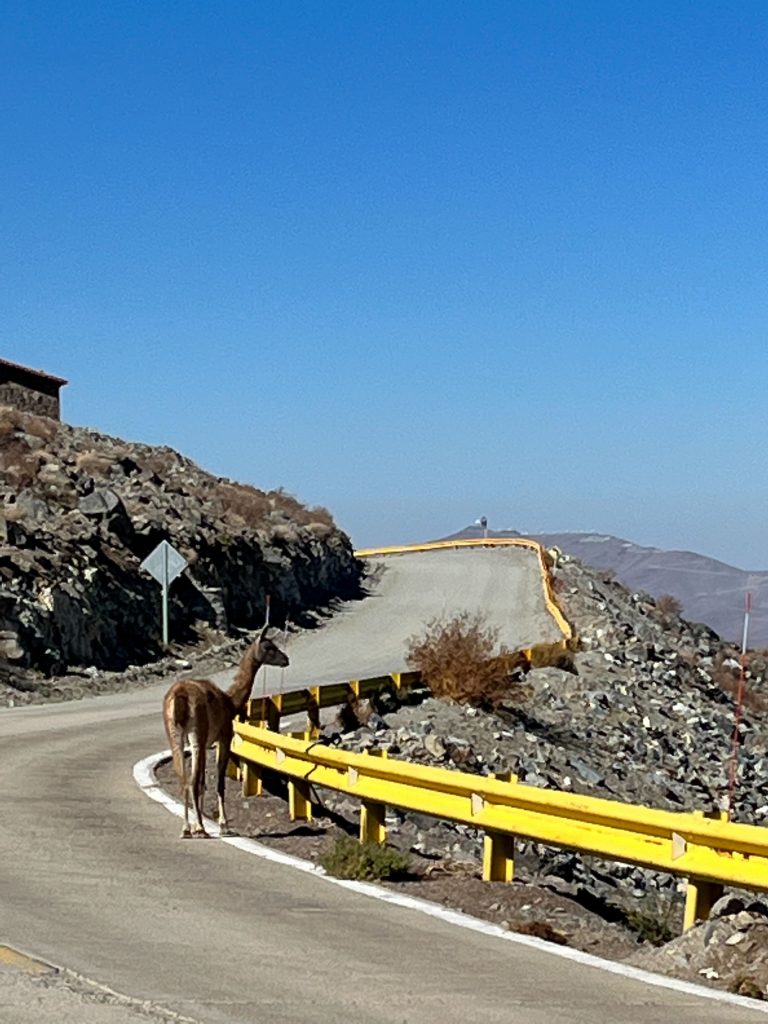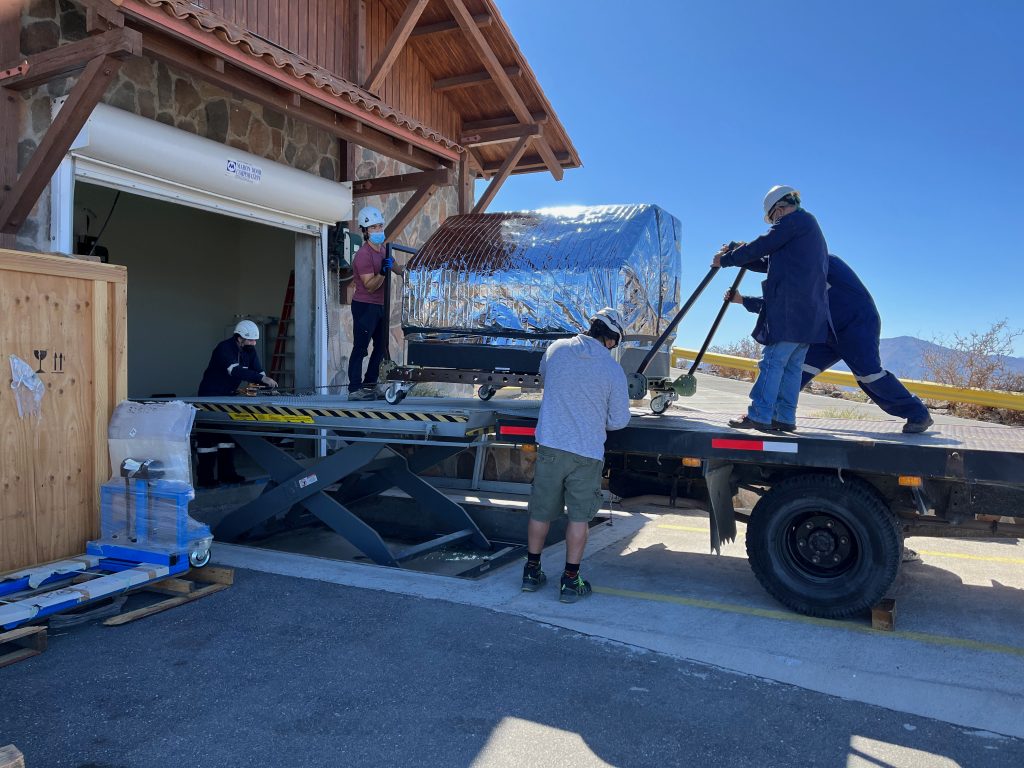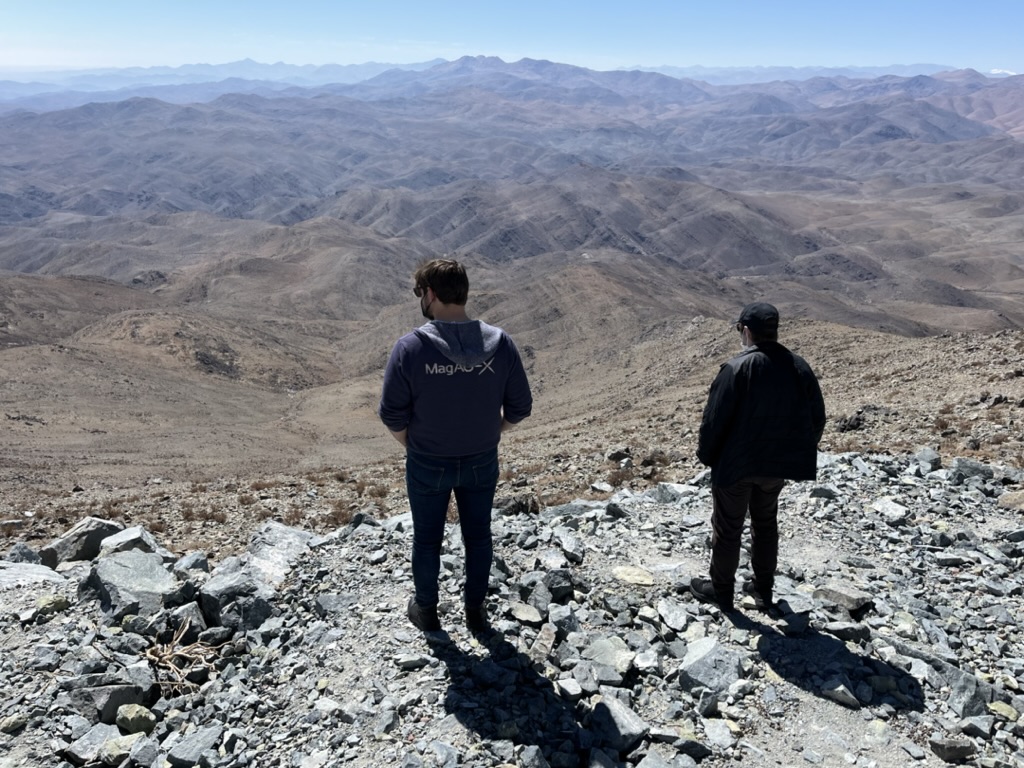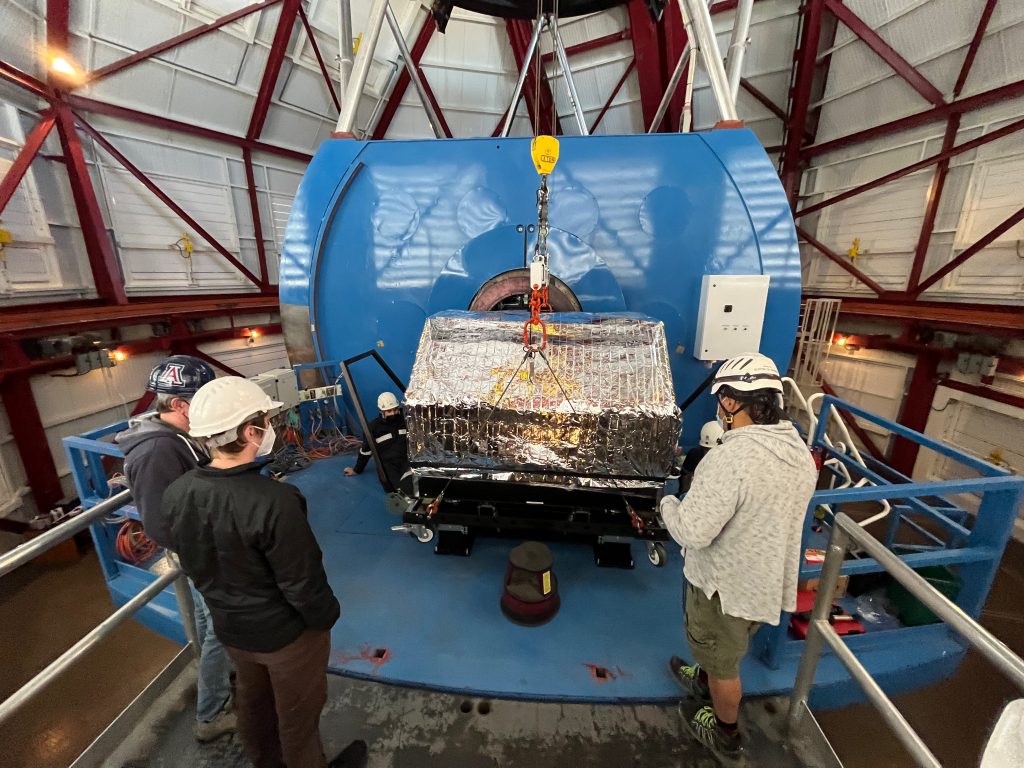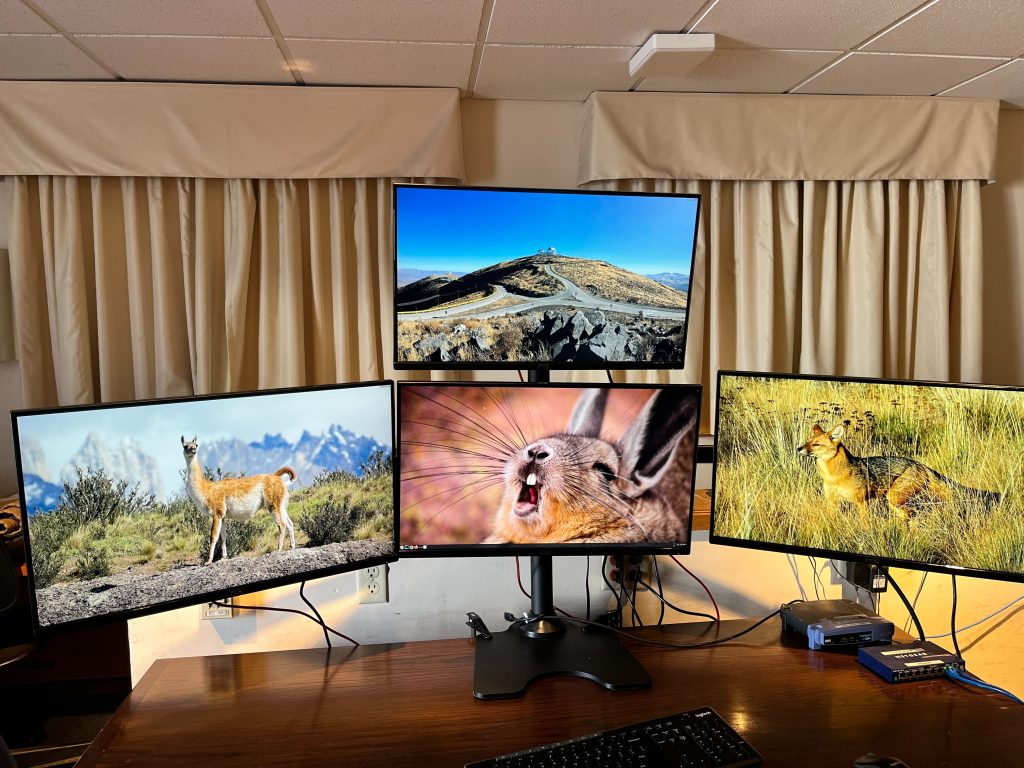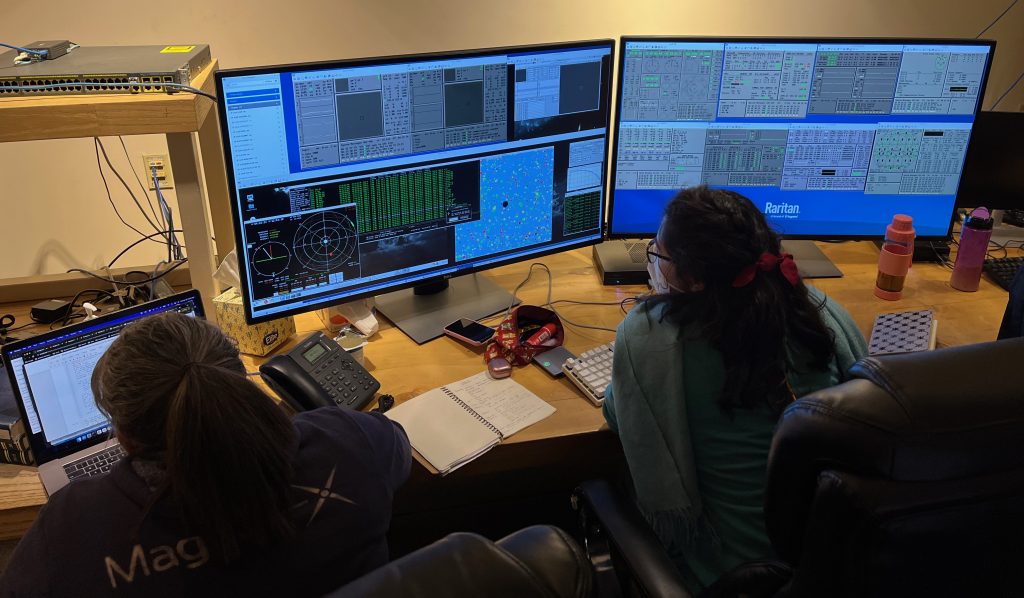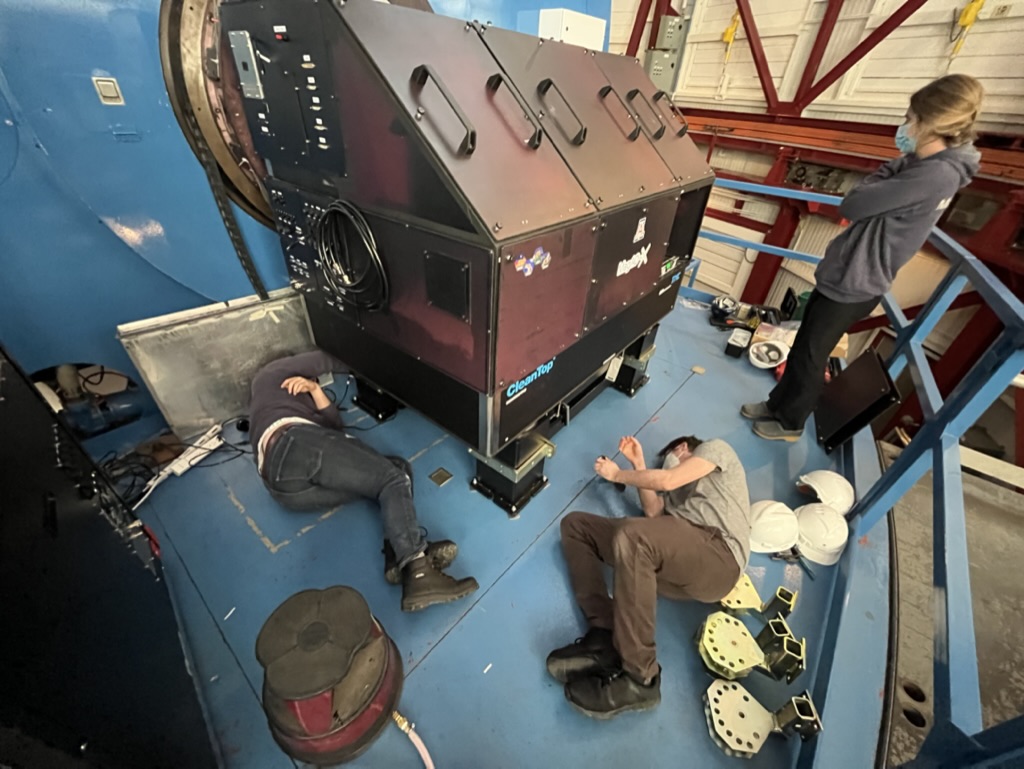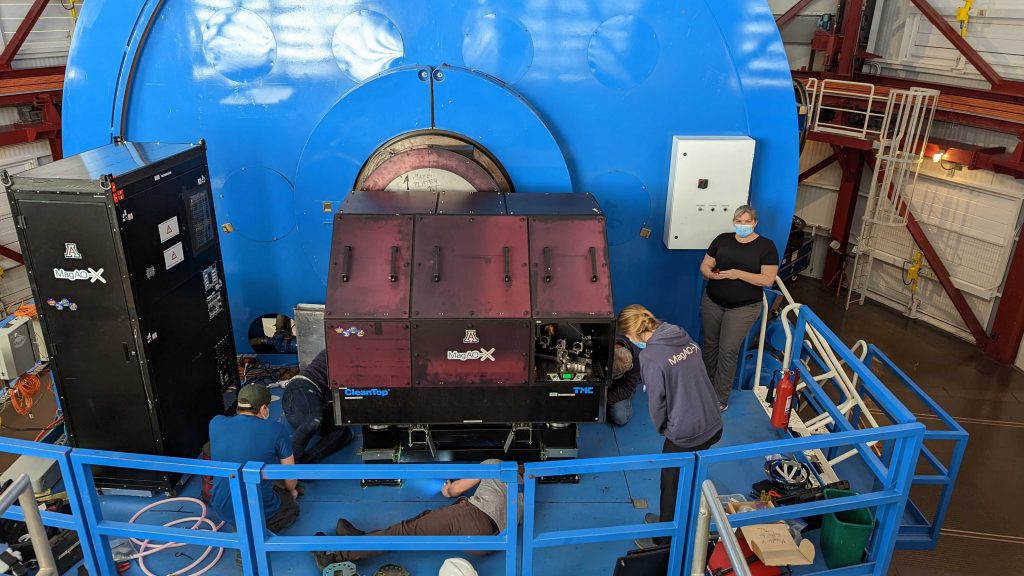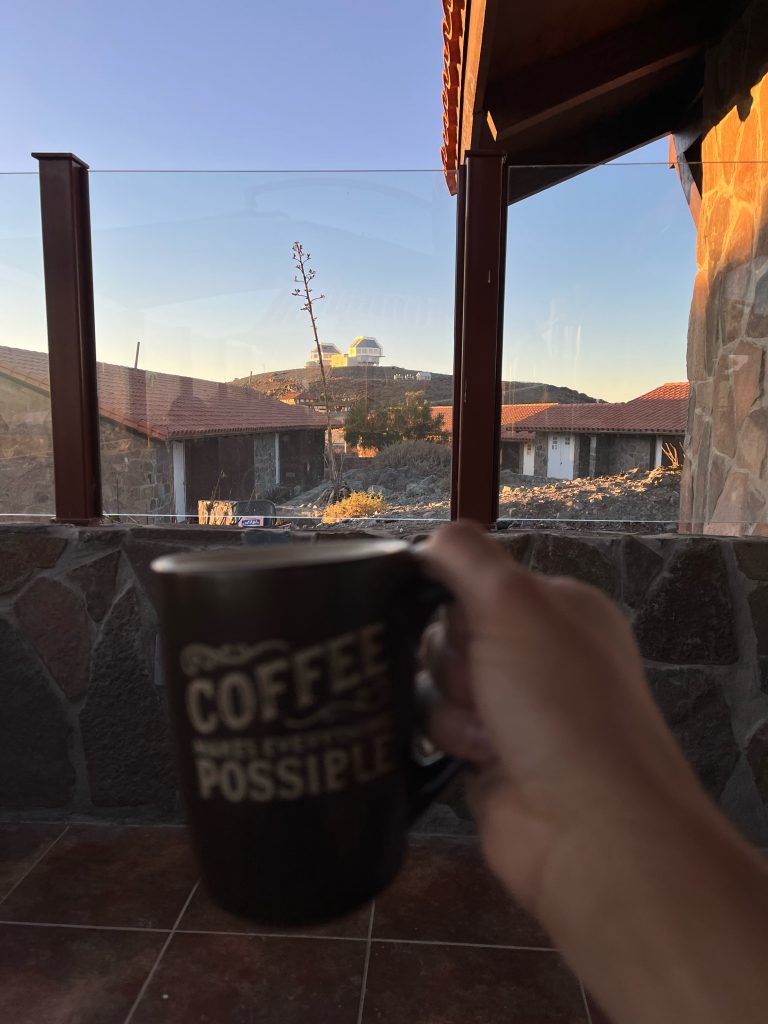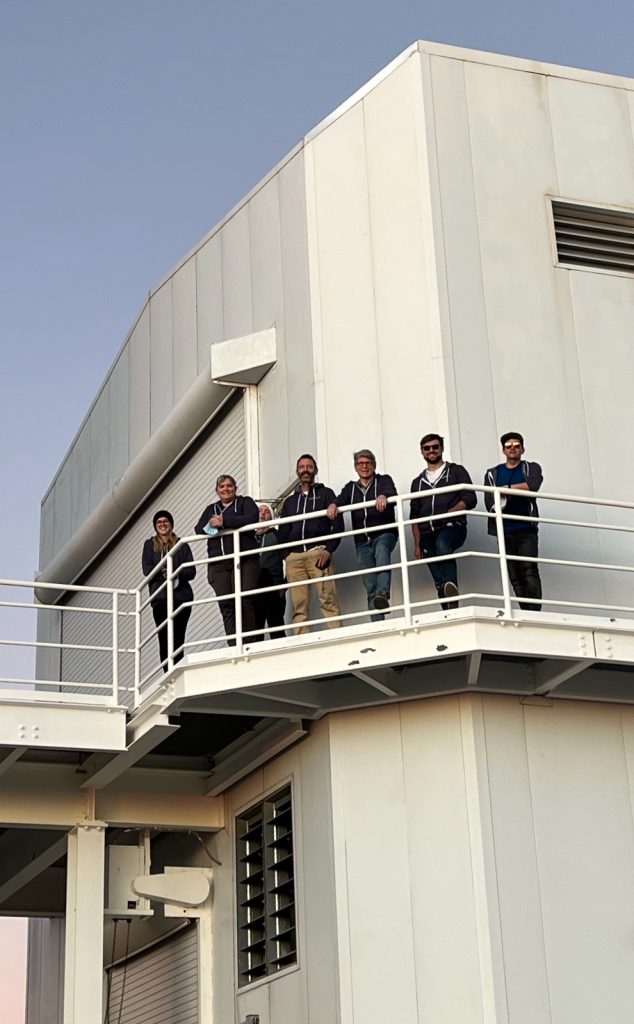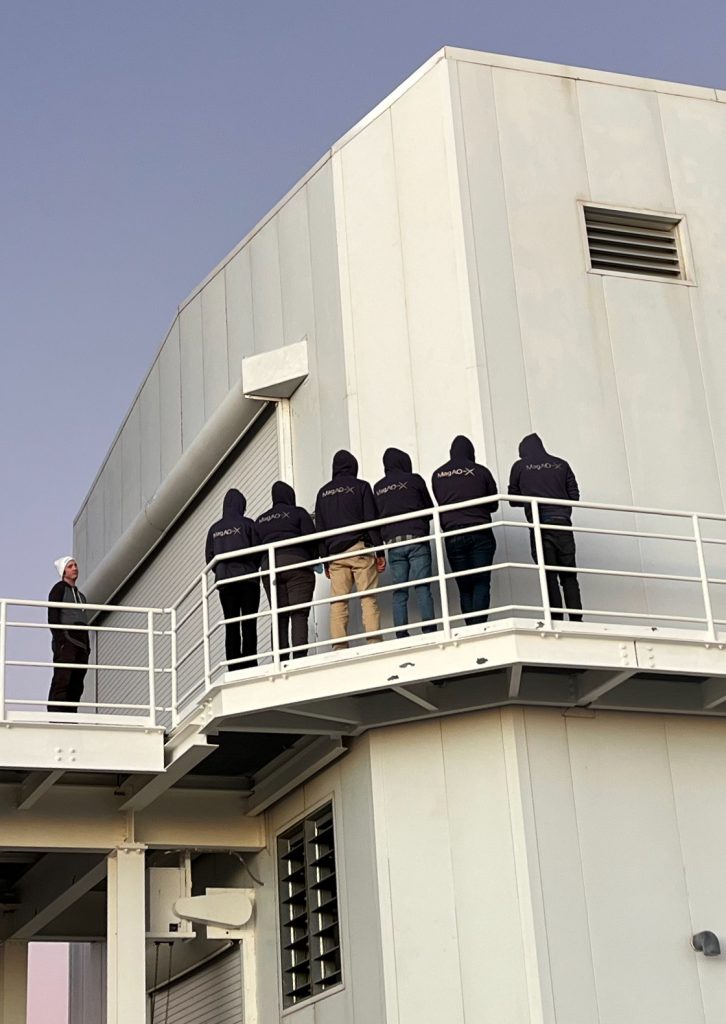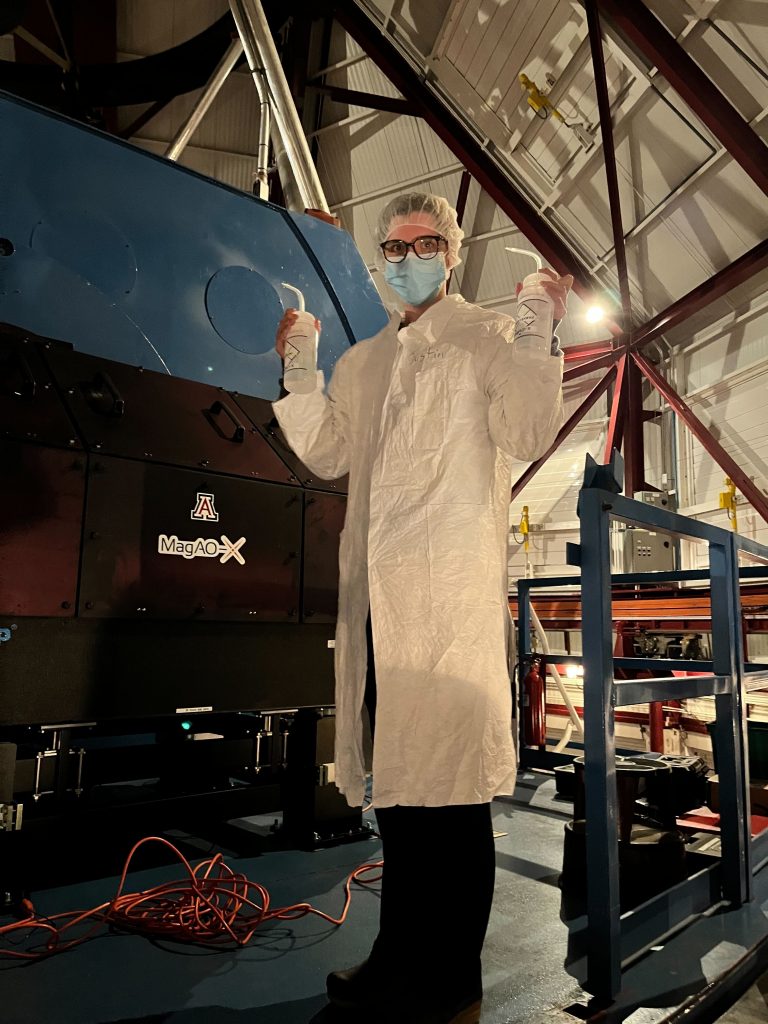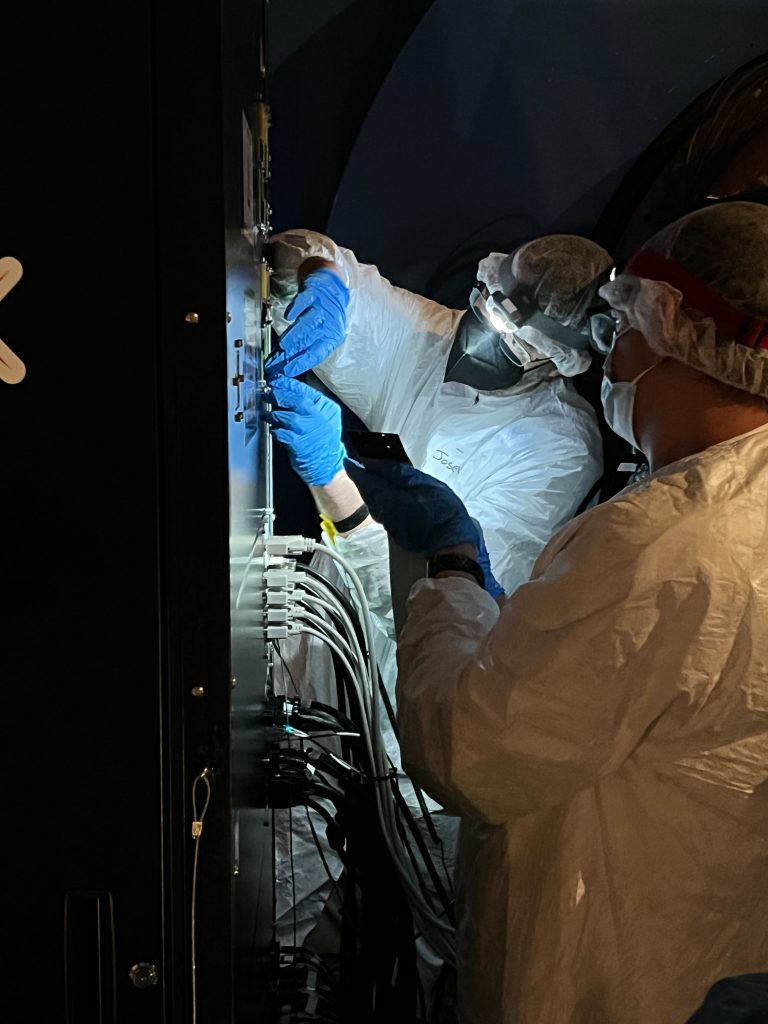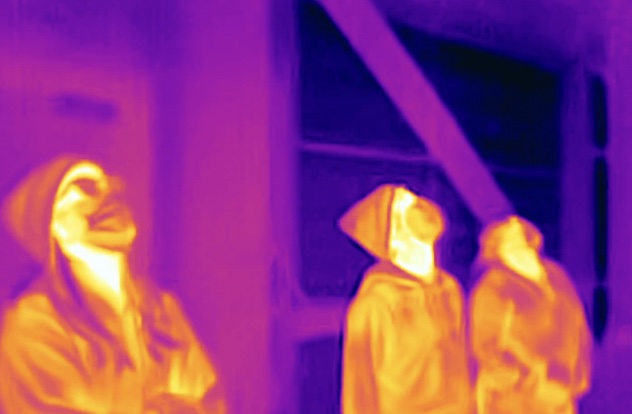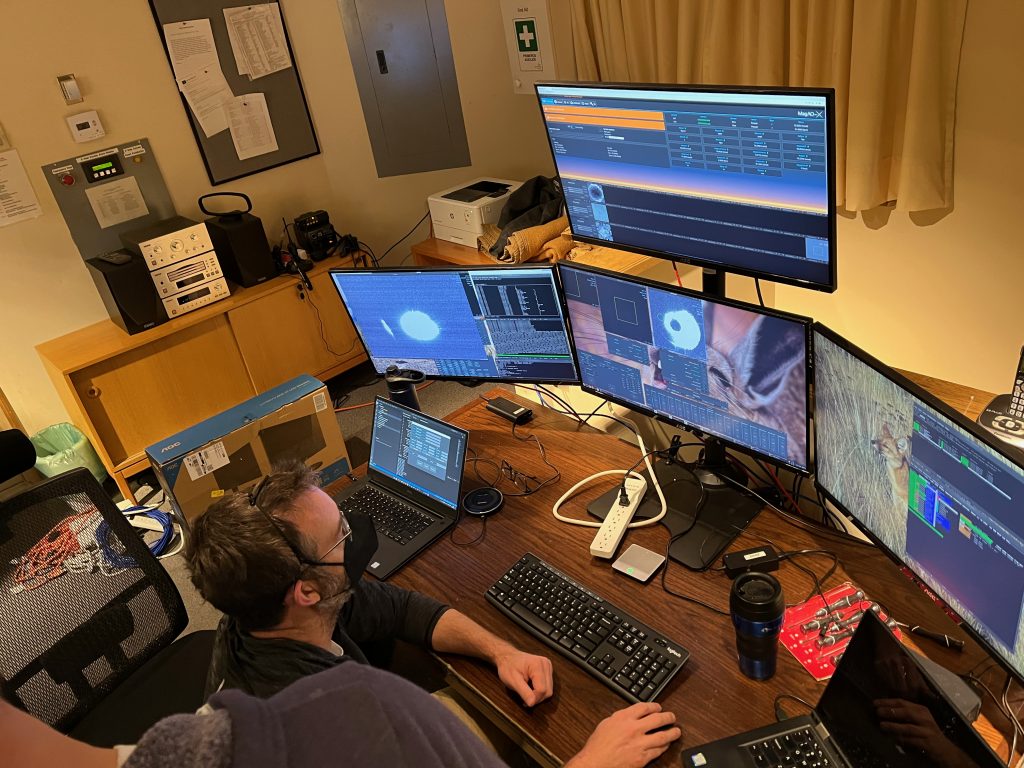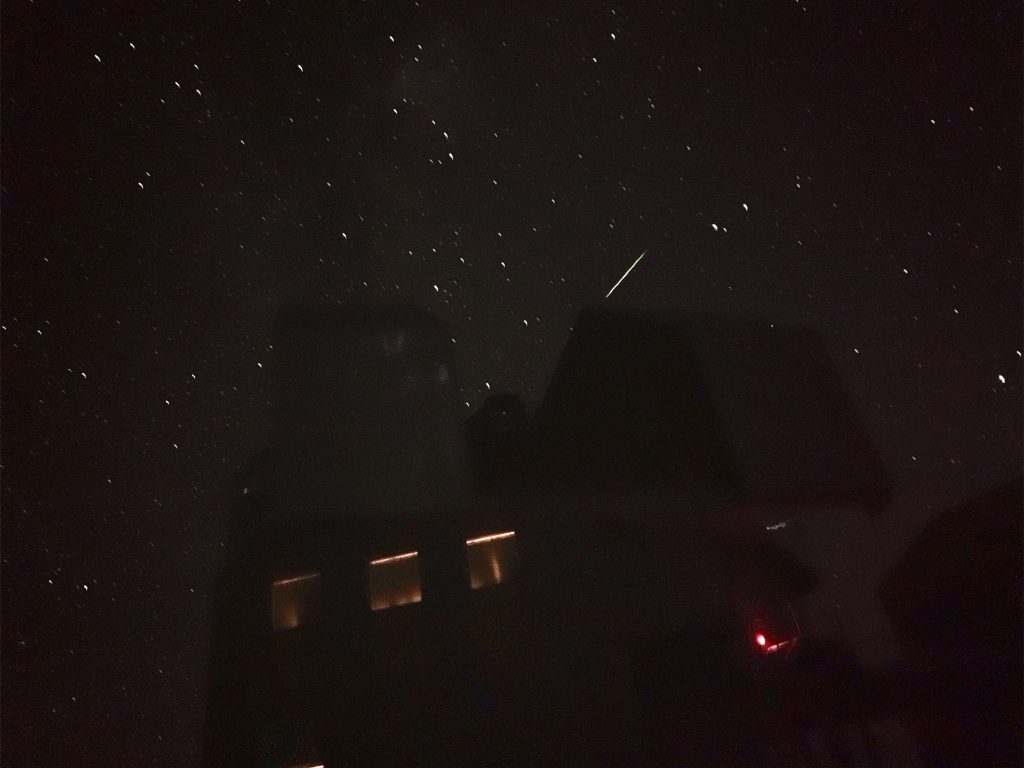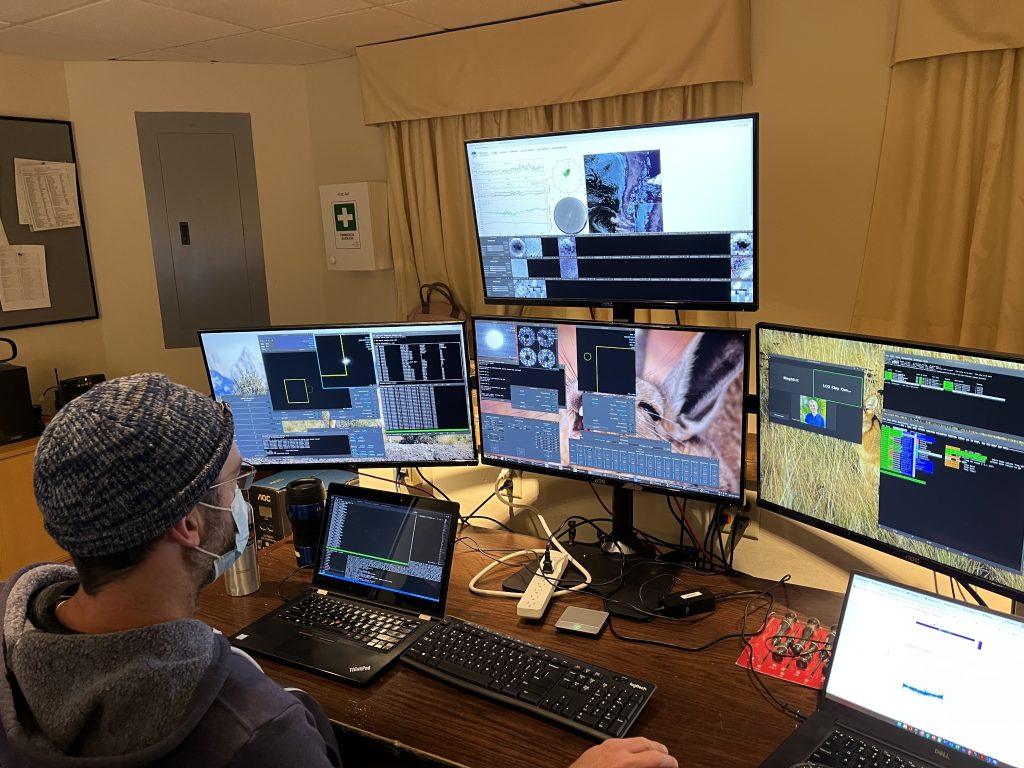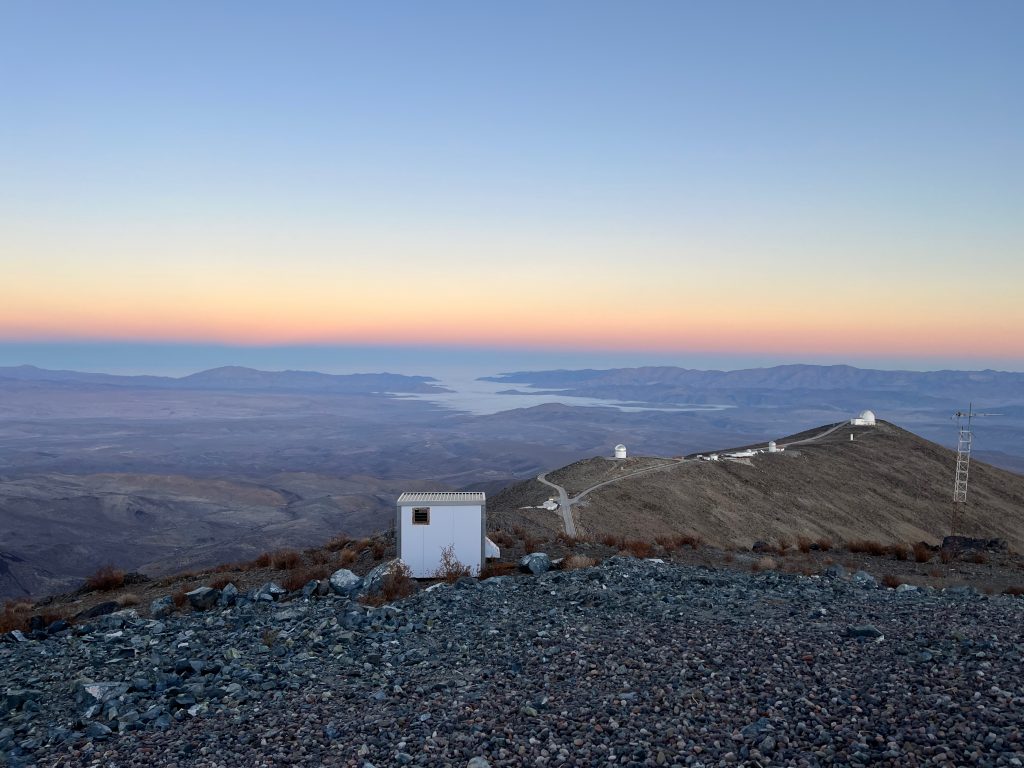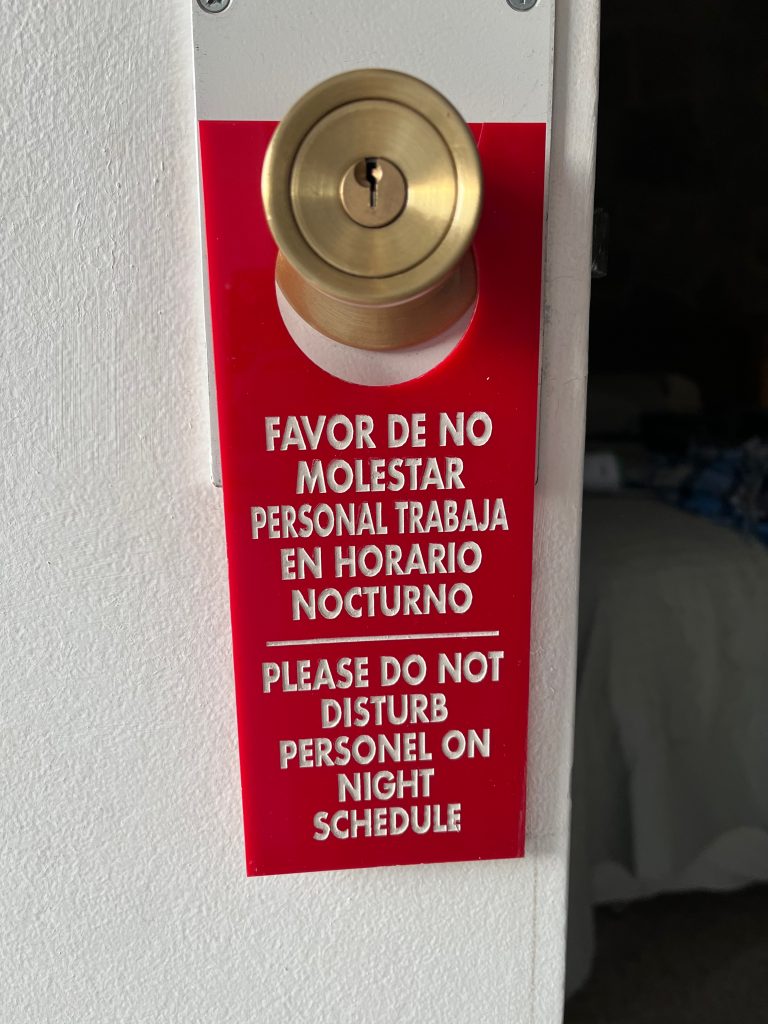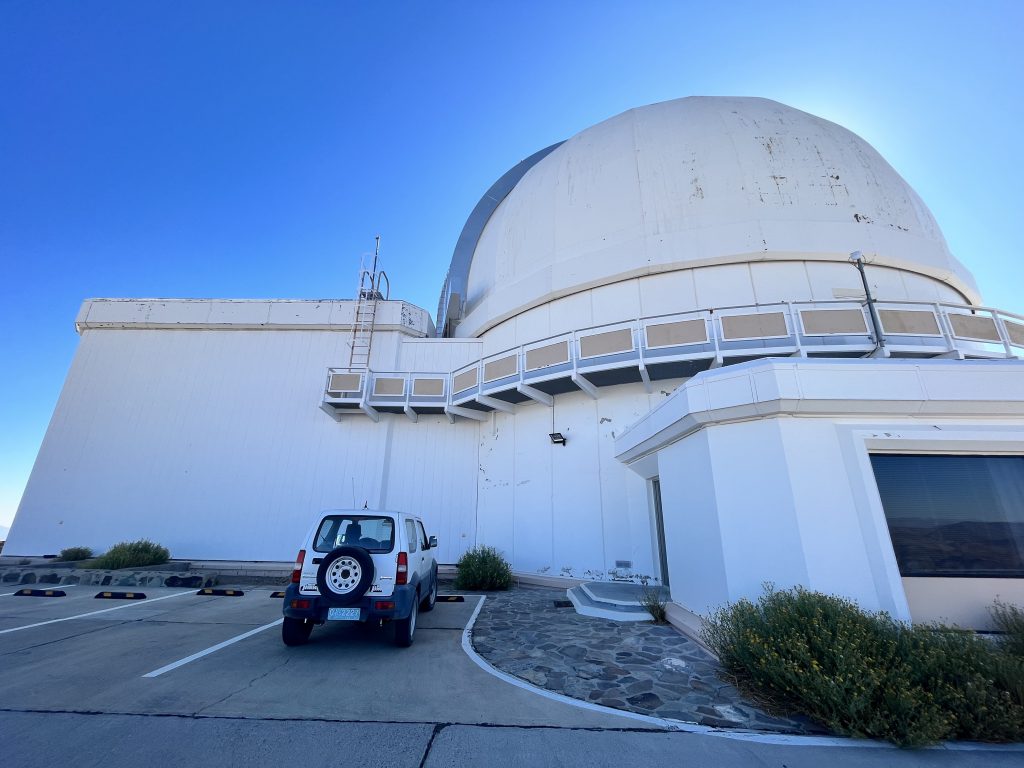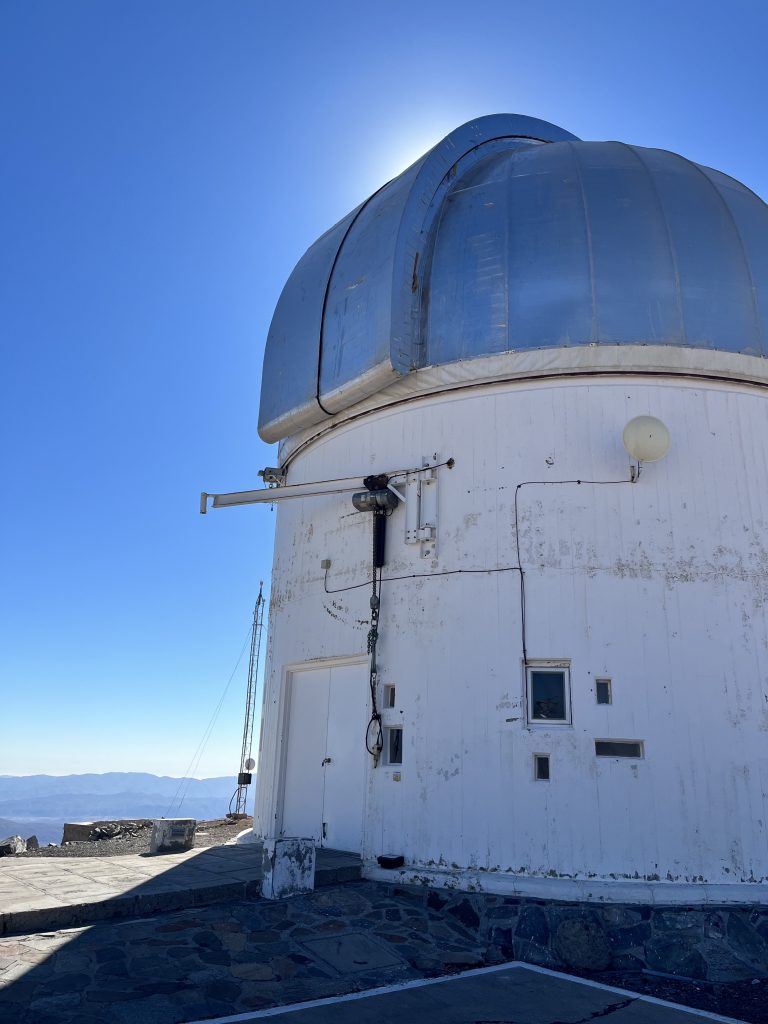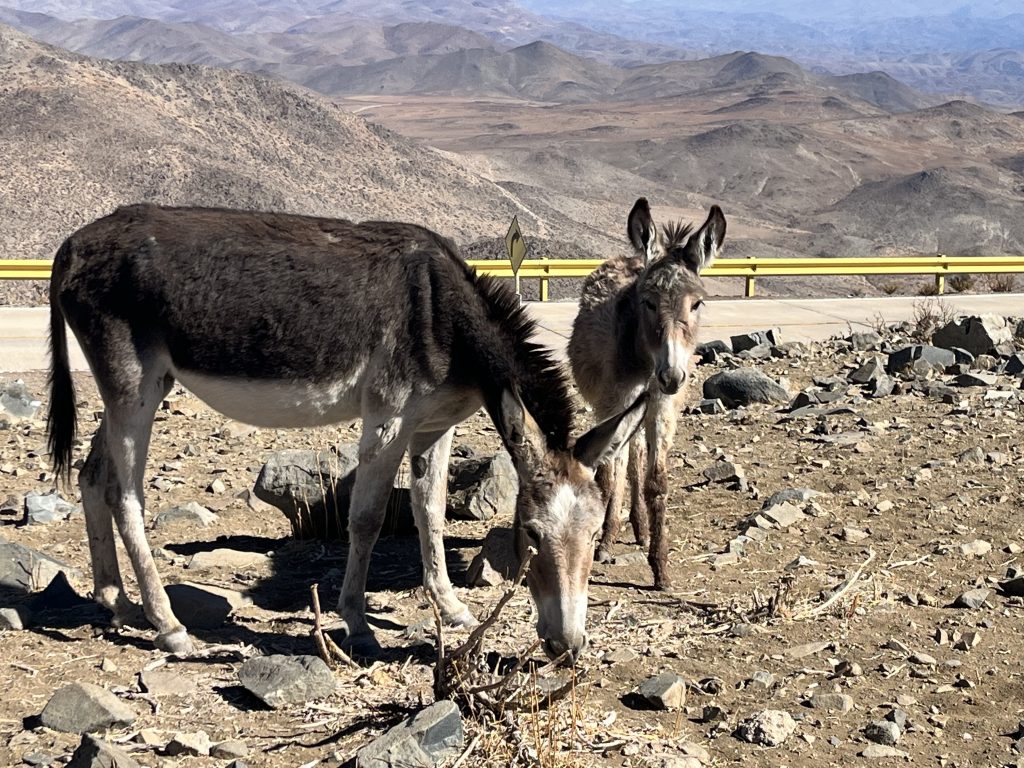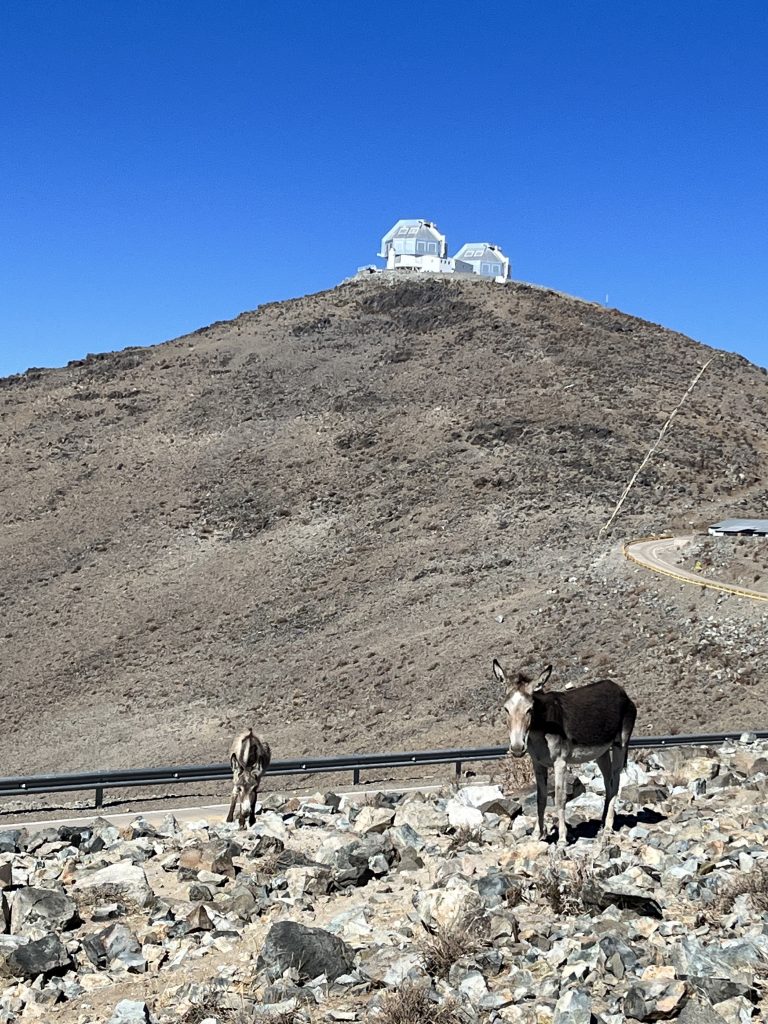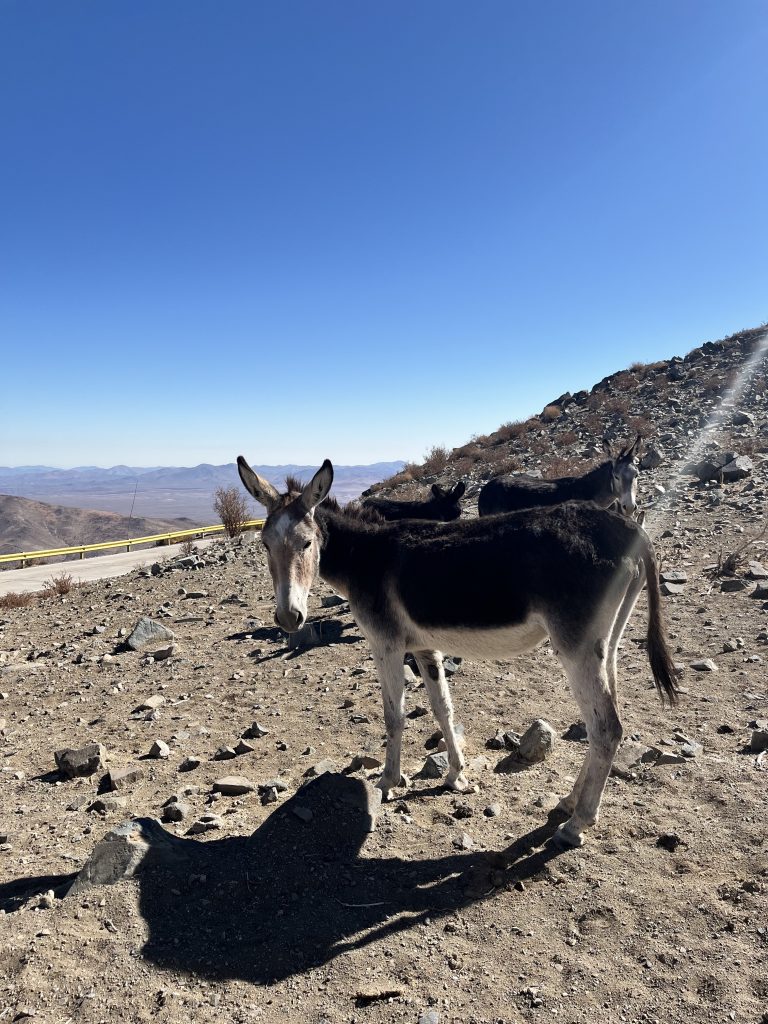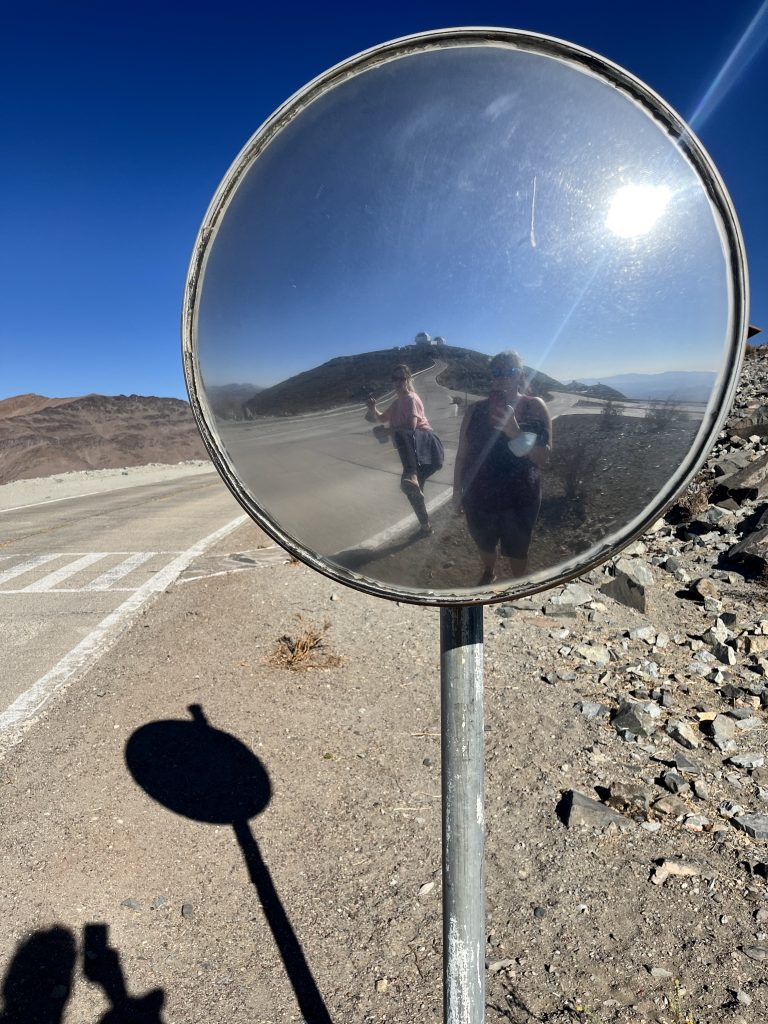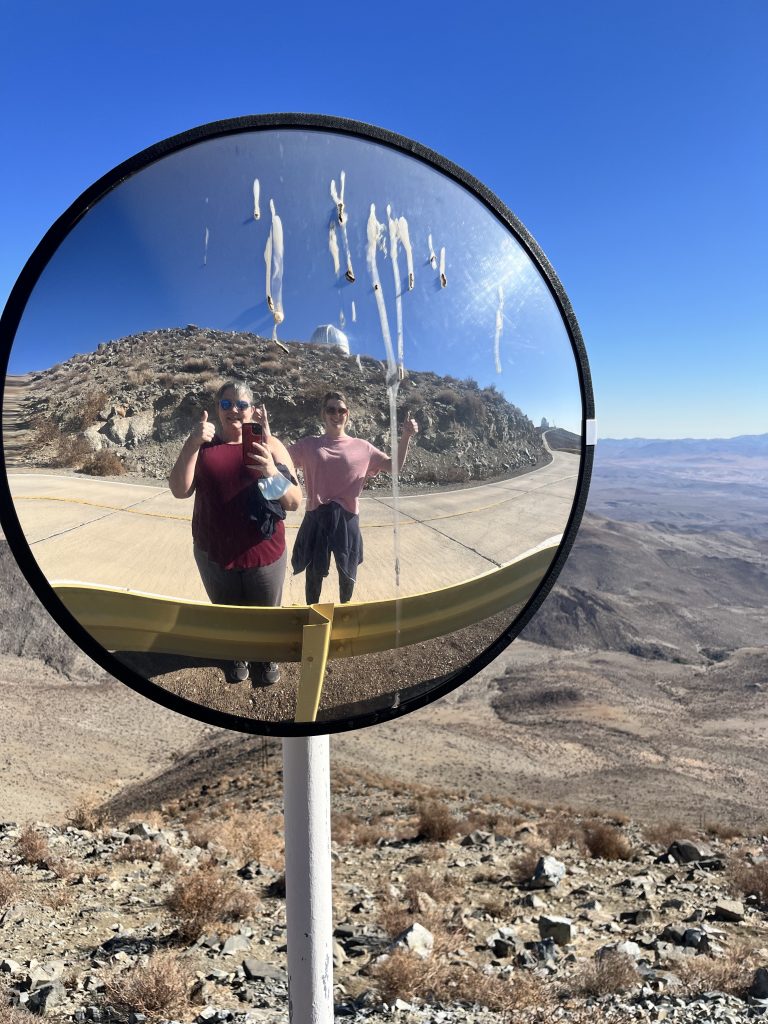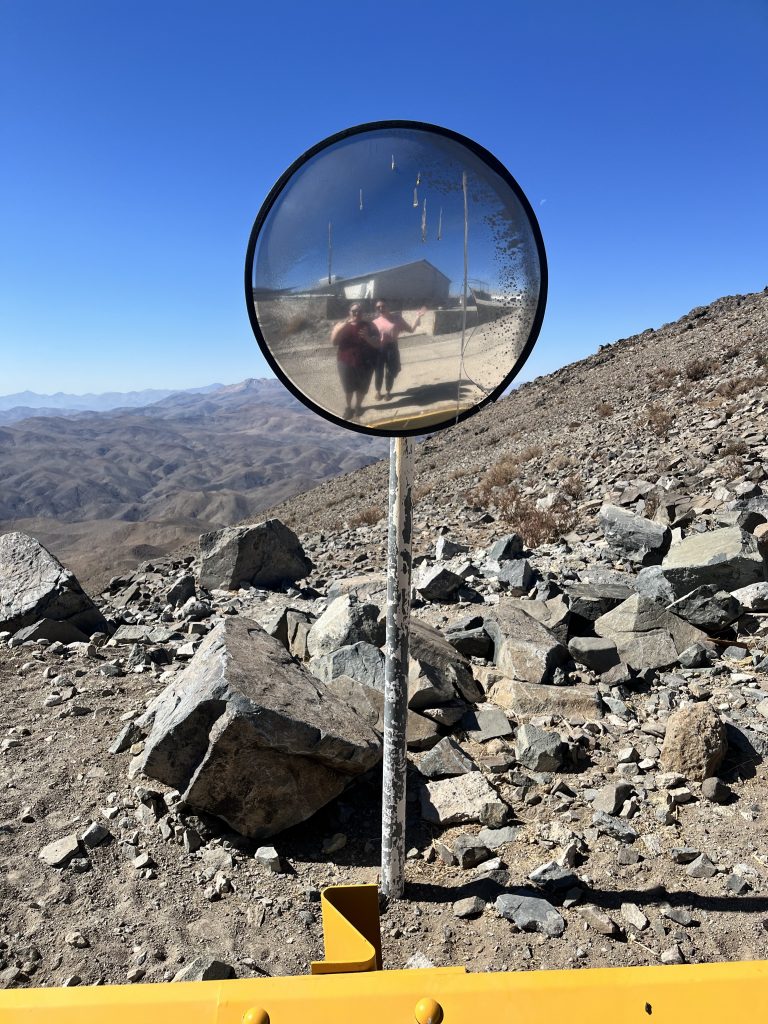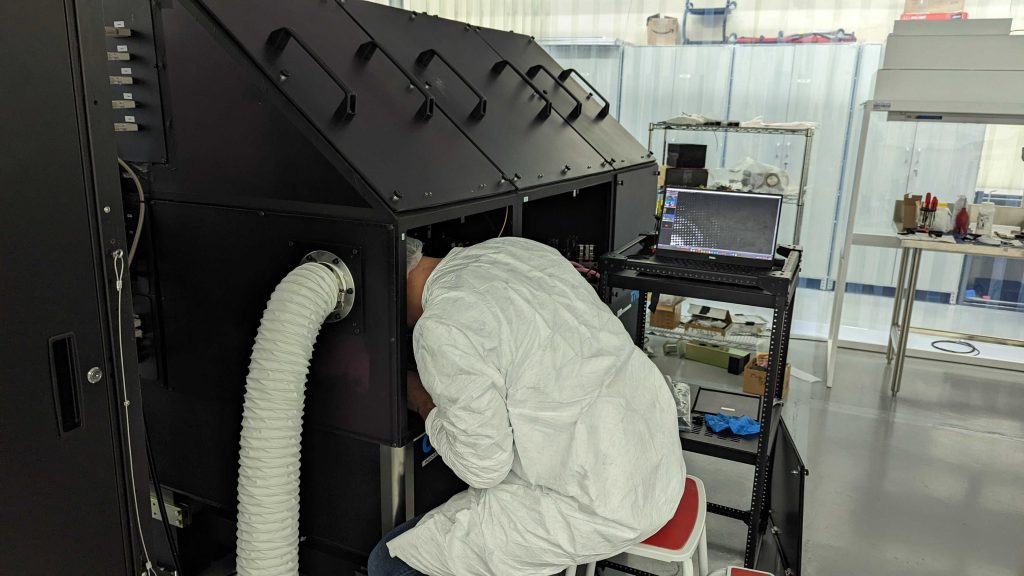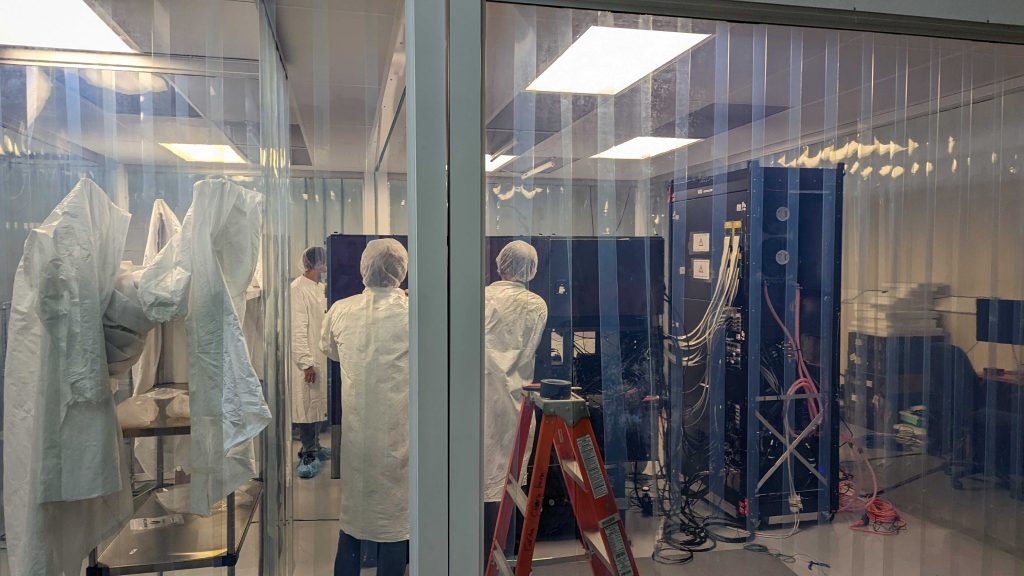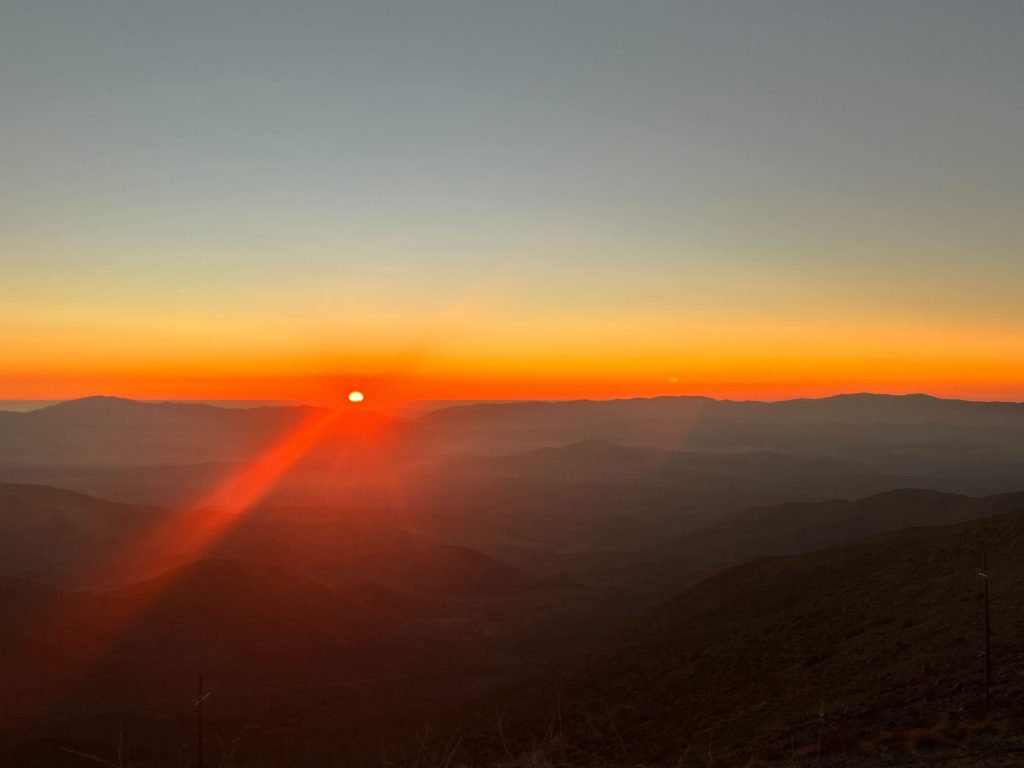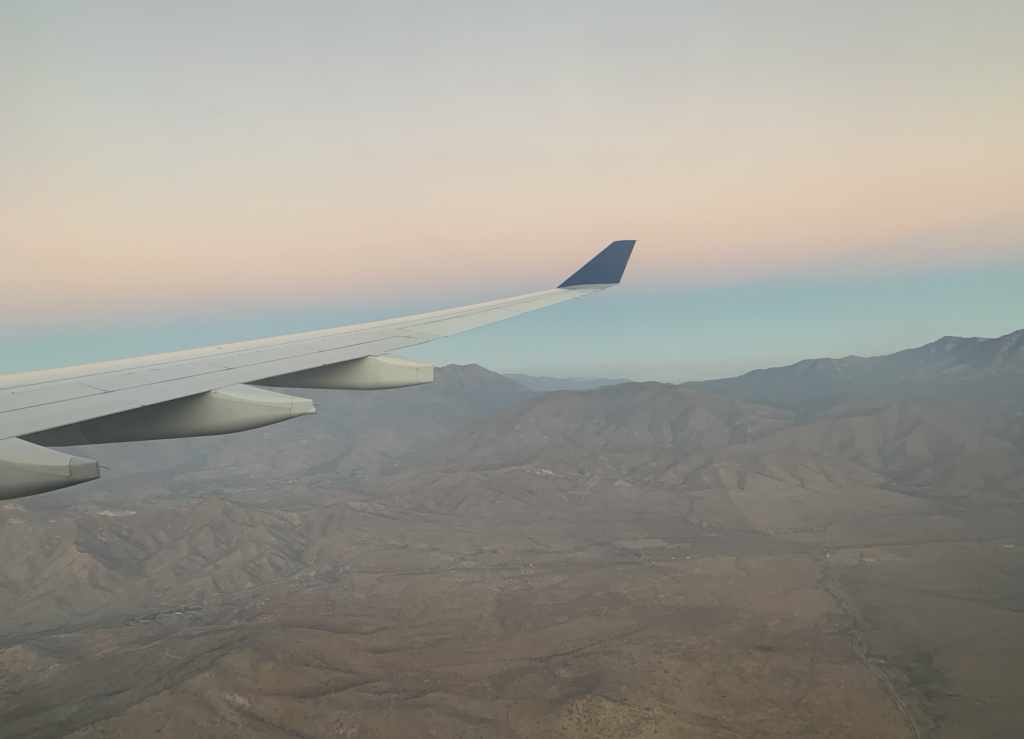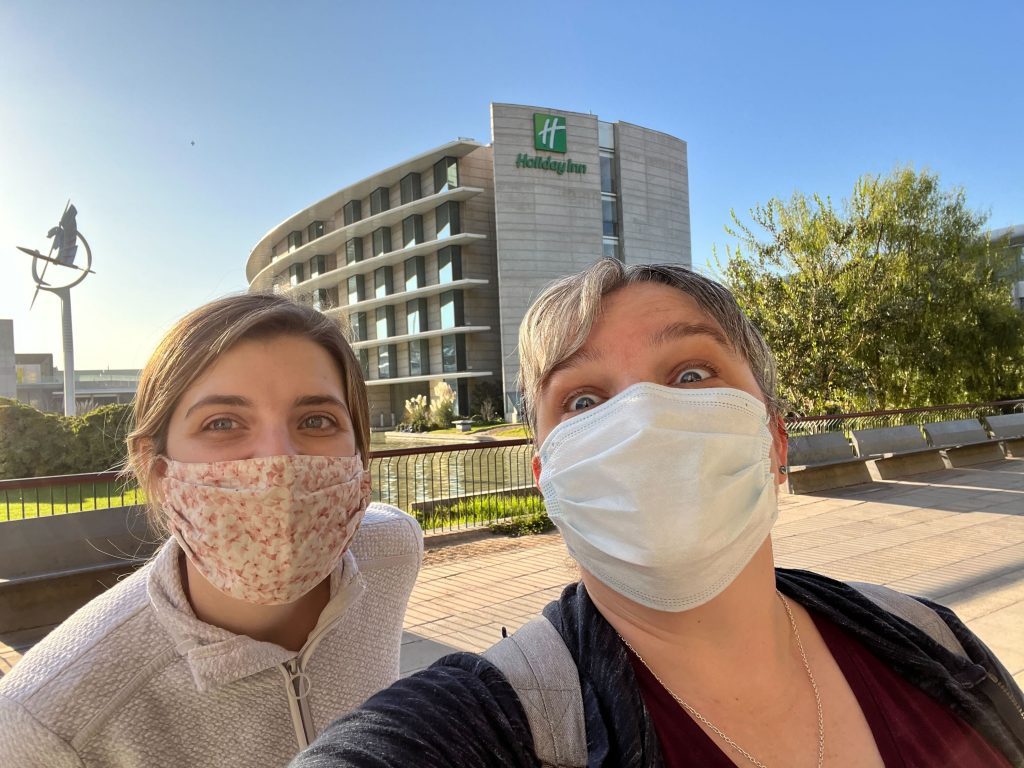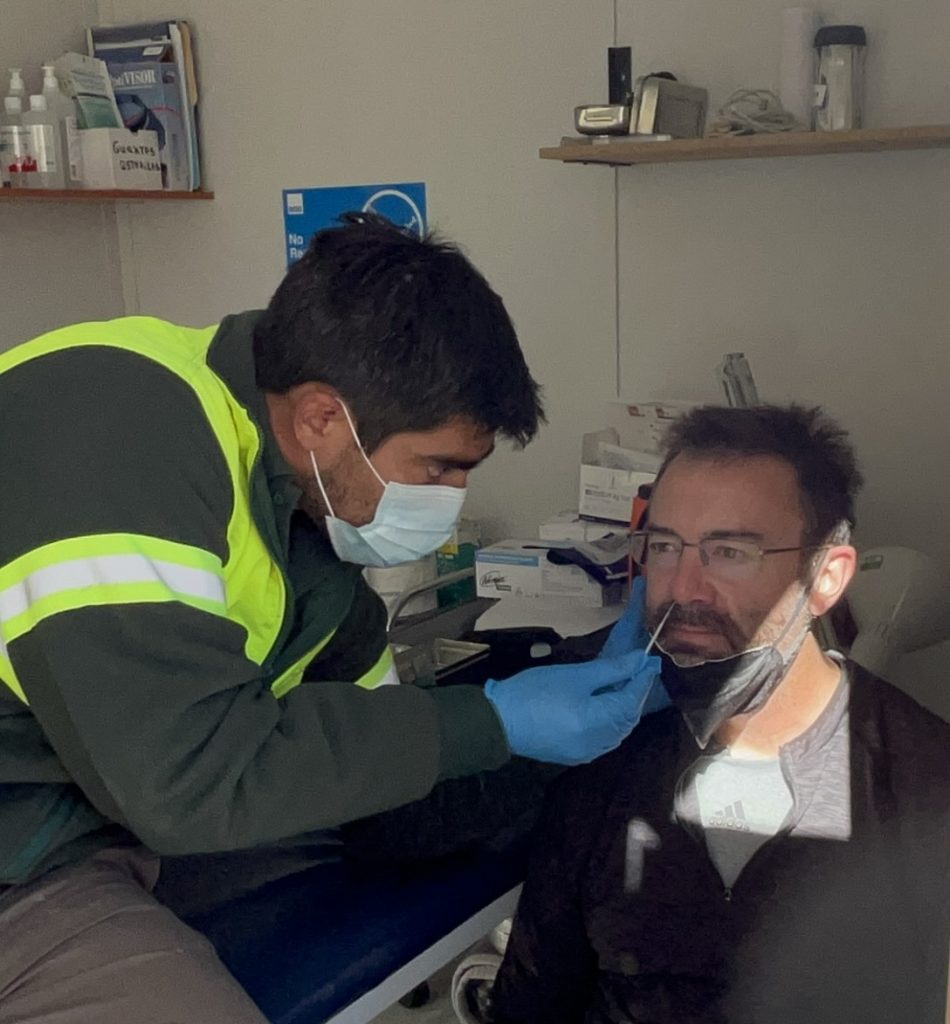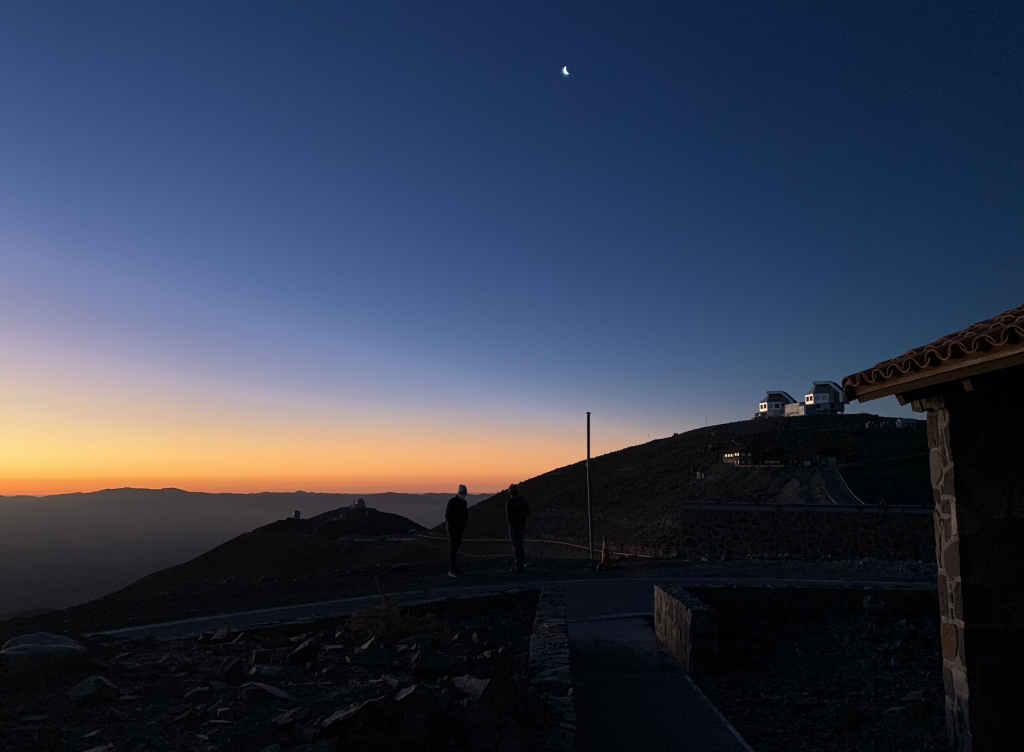The XWCL had a rather successful day up here on the mountain, even considering the Covid-mandated limit of 4 people in the control room (including the telescope operators). The team adapted and built a mega-desk ‘junior’ in the kitchen/lounge area of the telescope, wherein the remaining members of the group could stay well connected to those in the control room.
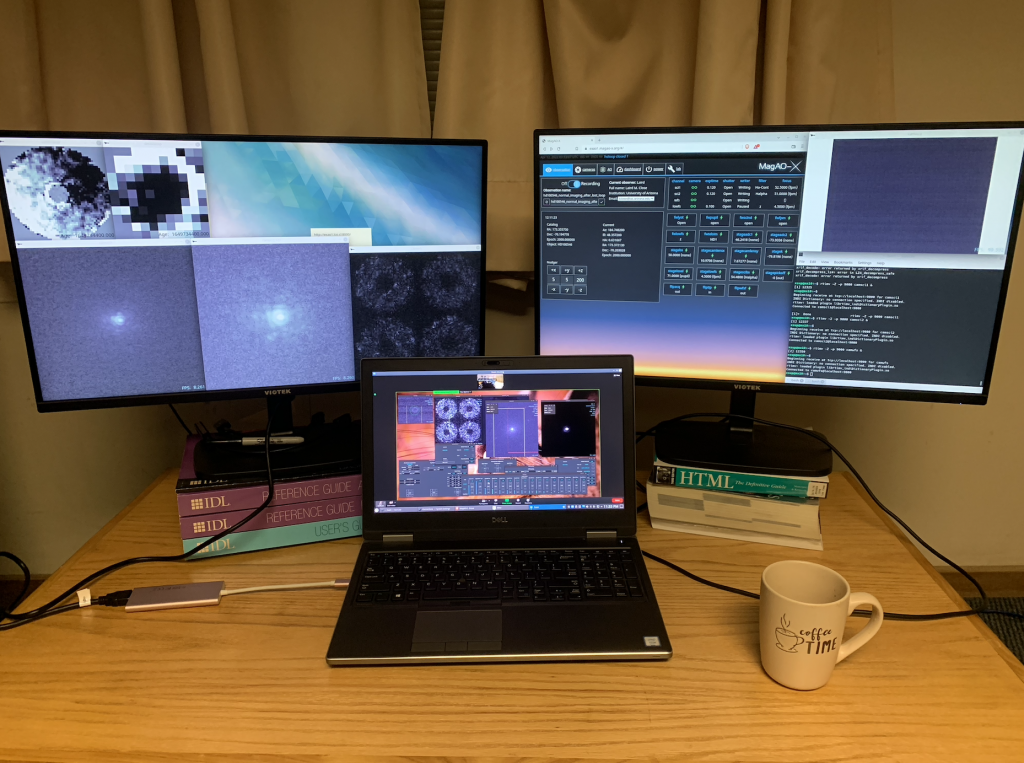
Throughout the night the team successfully closed the loop on several targets and saved quite a bit of data!
Dr. Laird Close investigated a 6.7 mag young star with a protoplanetary disk, taking 93k frames in H-alpha and continuum in MagAO-X’s SDI mode with the 2 EMCCD cameras running at once. This observation was done over 2.5 hours running with 900 modes corrected at 2KHz in 0.6′ seeing and 1.5-1.3 airmasses.
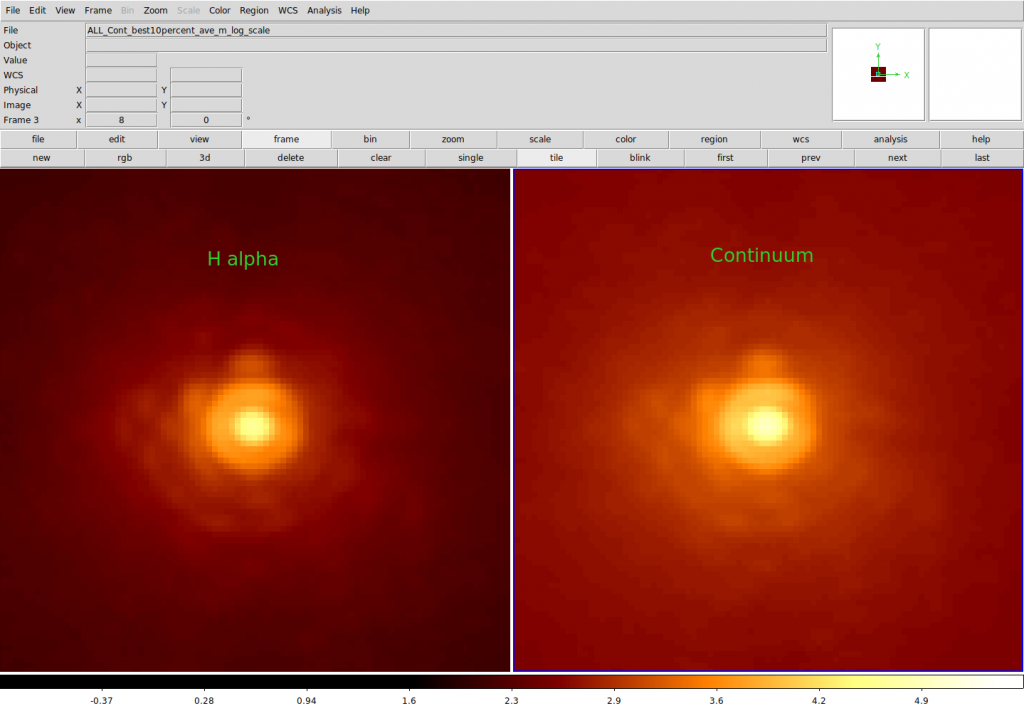
These images are nearly diffraction limited with a 24 mas FWHM. Taking the differences between these images after a full pipeline reduction will reveal any H-alpha emitting objects – like protoplanets! To quote the astronomer himself, ‘Tonight was a good night for MagAO-X, it really proved it’s mettle!’ – Dr. Close
Along with this, Dr. Sebastiaan Haffert took a look at PZ Tel B – a low mass (in between 30 and 70 times the mass of Jupiter) brown dwarf companion orbiting its primary star PZ Tel A in the constellation Telescopium. The two have an angular separation of about 0.33 arcseconds, meaning they are separated by roughly 18 AUs. After some investigation, I discovered our very own Dr. Jared Males (though not yet a Dr. at the time) and Dr. Laird Close were on the team who discovered PZ Tel B at the 8m Gemini-South Telescope here in Chile in 2010!
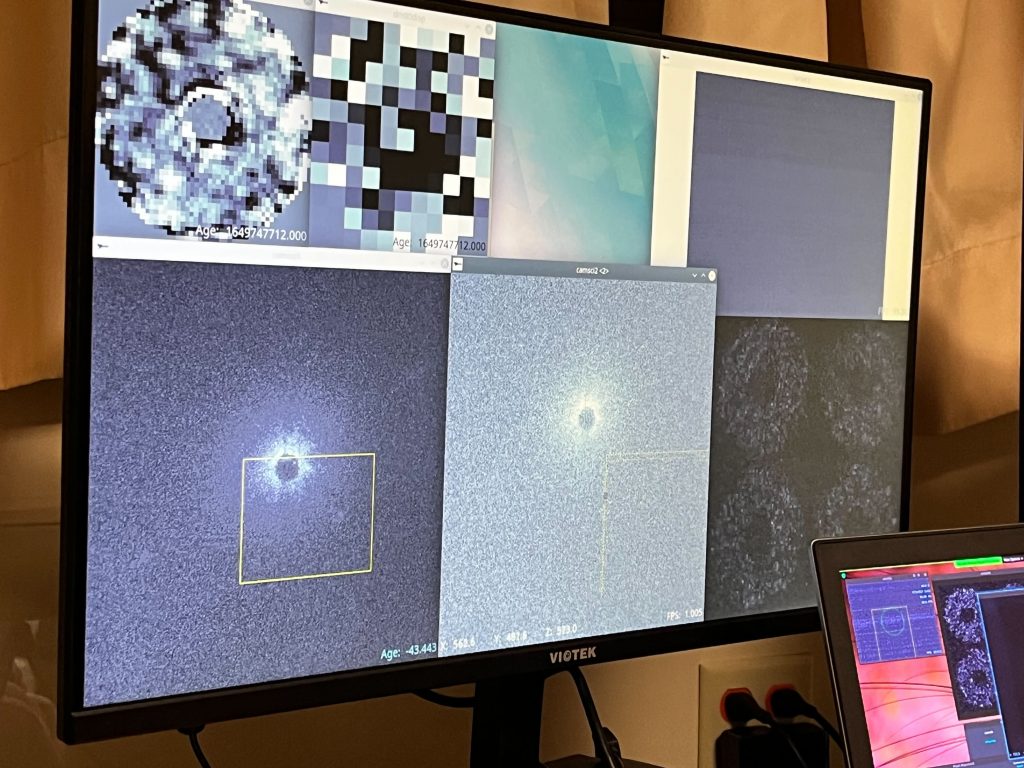
To view the brown dwarf companion, a Lyot coronagraph was aligned with the primary star. Once alignment of the pupil plane, occulting focal plane mask, and Lyot-plane stop were complete, the companion appeared immediately in the z-band!

In other fun companion news – Logan and I got very close to this run’s mascot Carlos Culpeo. I am certain he was hopeful that I had a snack for him, but unfortunately I did not have any left-overs from dinner to offer.
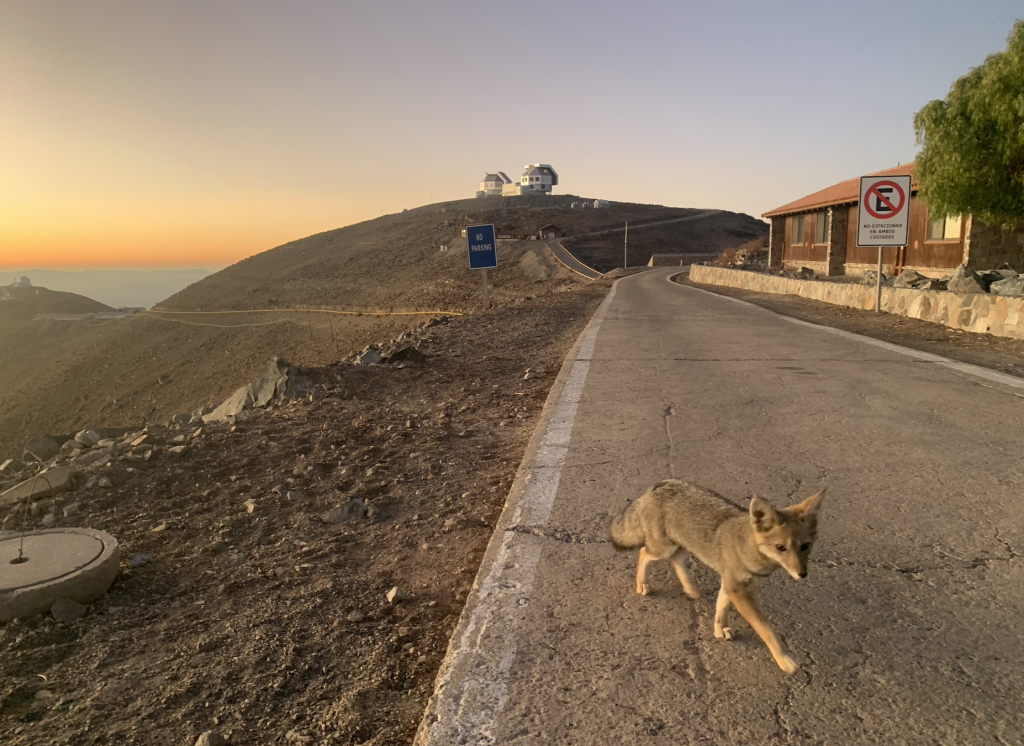
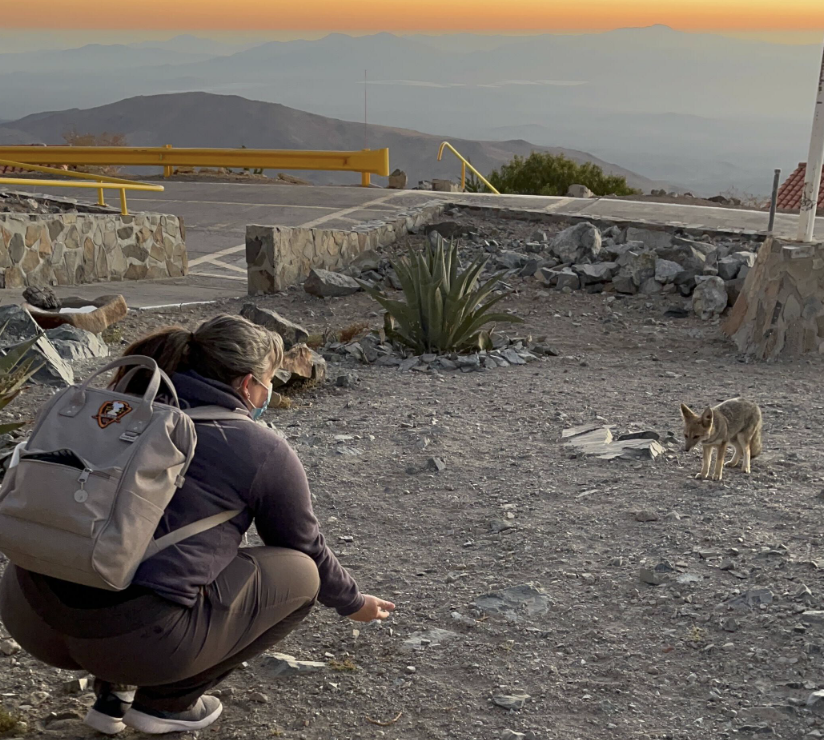
As it was a good day for the team and MagAO-X, so the song of the day shall reflect these good feelings as the sun rises, and we settle!
Song of the day: Walking On a Dream by Empire of the Sun.
